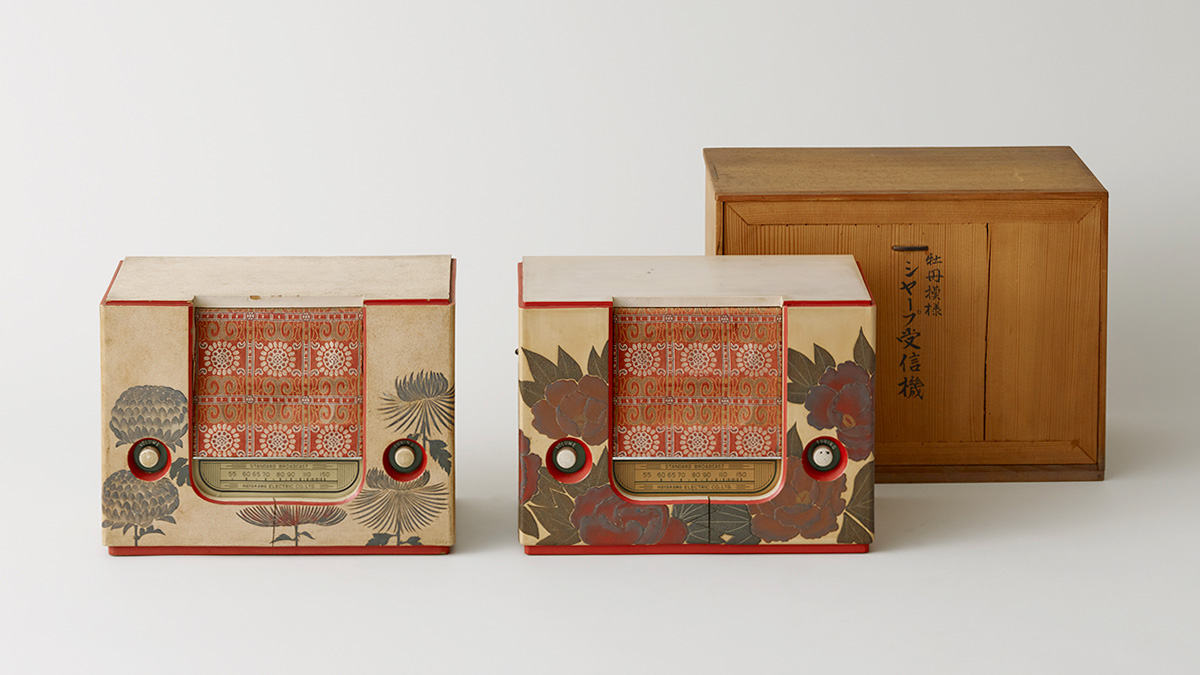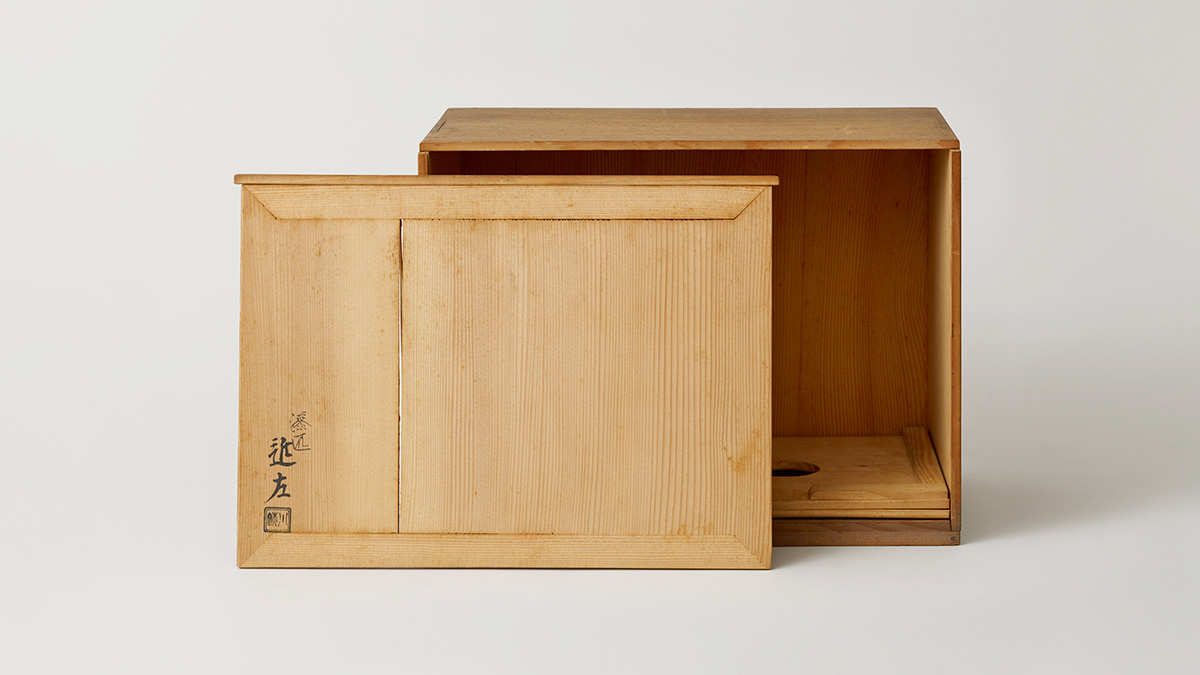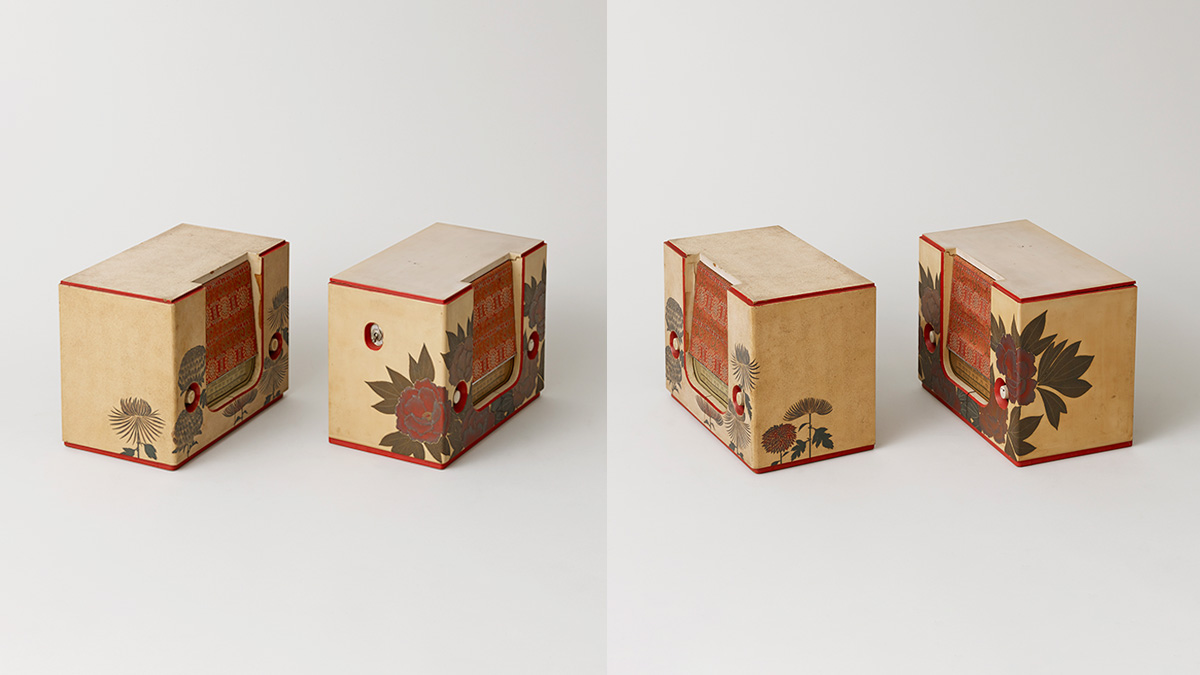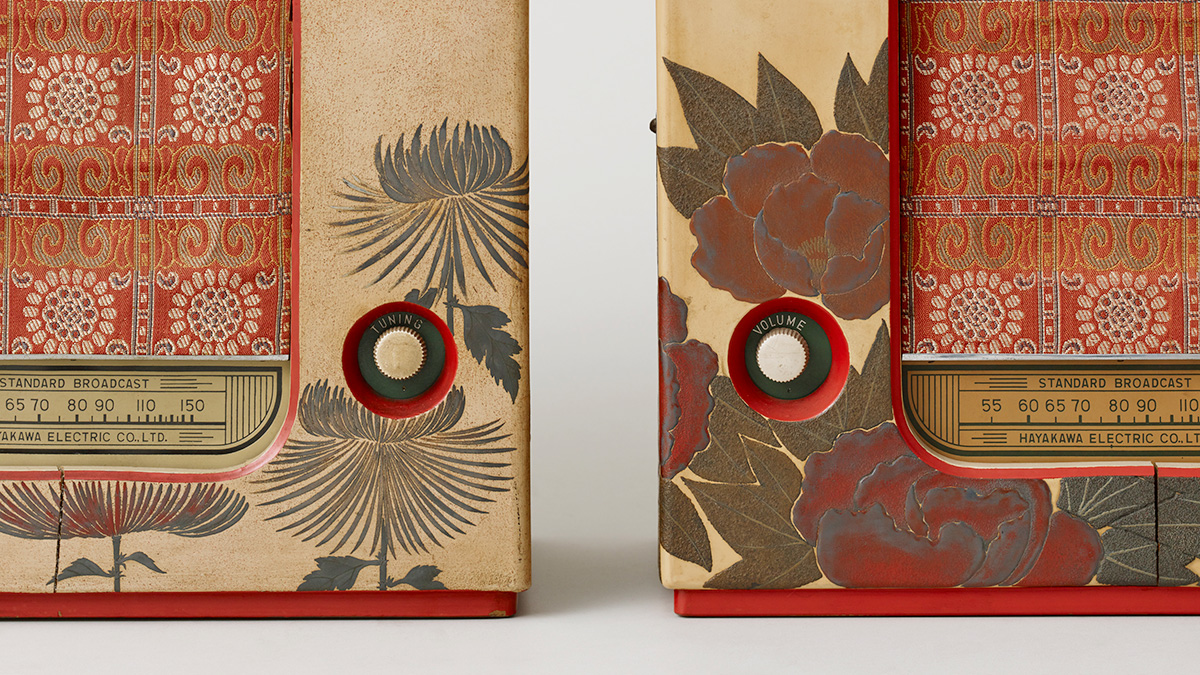IN HISTORY
1948 Lacquer Painting Radio
“IN HISTORY”: Sharp and design in history – A joint project with Sharp Museum commemorating its 40th anniversary.
Hello, I am Fujiwara from Sharp Museum. This is a series where Sharp Museum staffs Fujiwara and Nakatani talk randomly about products and history of Sharp. I hope this will be an opportunity for you to find interest in Sharp’s history in some way.
This time we will talk about the 1948 Lacquer Painting Radio.

A Radio Created with a Lacquer Artist for Gift Use
A popular song back in 1948 in Japan was Tokyo Boogie Woogie, written by Masaru Suzuki, composed by Ryoichi Hattori, and sung by Shizuko Kasagi. Its catchy tune expressed the air of excitement and positive hearts at that time after the War had ended.
I am sure many exciting songs were played by this lacquer painted radio.
Before World War II, Tokuji Hayakawa, founder of Sharp Corporation invented a new intermittent belt conveyor system and acquired many patents. By realizing mass production of one radio at an astonishing speed of every 56 seconds, he contributed to spread the radio to the public at an affordable price.
Meanwhile this radio for gift use was each handwritten by lacquer artist Kinsa Kawabata, and was completely different from mass production types, weighing its value in rarity and uniqueness.

As people’s living were starting to return to an ordinary stage after the War, large cities such as Tokyo and Osaka rapidly started to show recovery from around 1948. Tourists from abroad gradually grew, and women gained their freedom to enjoy fashion to express themselves that was prohibited during the War.
At that time, the New Look Style long skirts announced by Christian Dior became a big hit in Japan via U.S. I can just imagine how people must have been enjoying a lively atmosphere during those days.
This radio must have perfectly suited that time, making the atmosphere lively with its glamorous design. It is definitely a furniture suitable to decorate and admire.

Design Emphasizing on Rarity
Its design carefully minimizes unevenness such as hollowing out tuning dials and volume control parts so they do not protrude.
Its color is an overall composed red (although it may have been brighter at that time). Red was traditionally used in auspicious occasions, and had the meaning of life and birth. It is also said to catch your eyes and make your emotions rise. When dye and pigment were still rare, a vivid red color was admired and special.
It must have been used only for special occasions to make people happy.
Usually in a radio, when you turn the tuner, a line moves across the scale to select the channel, but this radio does not have a sign that a needle existed.
Then how did people tune in? There was a beautiful secret behind this design not using a needle.

Pondering Over the Soft Light
This radio owned at our Museum does not work anymore, so I cannot check by myself, and there are no evidence such as a manual, so I can only depend on words that have been passed down within the company, but according to those words, the scale in the center part lighted up when the power was turned on, and a shadow appeared acting as a needle.
Unfortunately, we cannot show you that attractive appearance today. Still, I feel so relaxed just imagining a ray of shadow moving slowly across the light.
That’s it for this time. Next we will introduce our transistor-type radio introduced at the time when man landed on the moon for the first time.
[Sharp Museum commemorated it 40th anniversary on November 2021]
This is a series of Sharp Museum staffs Fujiwara and Nakatani talking randomly about products and history of Sharp. I hope this will be an opportunity for you to find interest in Sharp’s history in some way.